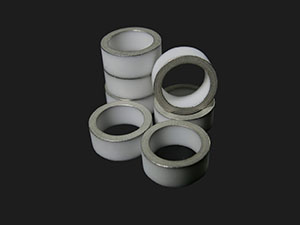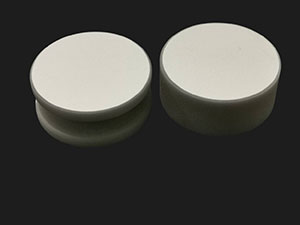Ceramic metallization
Ceramic metallization technology is a method of metallizing the surface of ceramic materials. By forming a metal layer on the surface of the ceramic, it gives the ceramic material the electrical and thermal conductivity of metal. This technology can not only improve the functionality of ceramic materials, but also expand its application scope and is widely used in electronics, communications, aerospace and other fields.The key to ceramic metallization technology lies in the surface treatment process, which mainly includes steps such as cleaning, activation, and electroless nickel plating. First, the ceramic surface is strictly cleaned to remove impurities and oxides on the surface; then activation treatment is performed to form an active substrate on the ceramic surface, which is conducive to the adhesion of the metal layer; finally, electroless nickel plating is performed, through chemical reduction. , forming a uniform and dense metal coating on the ceramic surface.
Ceramic metallization technology is widely used, the most representative of which is the metallization treatment of ceramic substrates. As an important electronic material, ceramic substrates are widely used in fields such as high-density integrated circuits and high-power electronic devices. However, its insulating properties limit its use in applications that require conductive properties. Through metallization treatment, this limitation can be effectively overcome, allowing ceramic substrates to play a greater role in electronic devices.
In addition to ceramic substrates, ceramic metallization technology is also widely used in ceramic conductive materials, ceramic heating devices, etc. For example, in the field of new energy, ceramic metallization technology can improve the conductivity of solar cells and improve photovoltaic conversion efficiency; in the field of aerospace, ceramic metallization technology can improve the high-temperature resistance of ceramic materials to meet the material performance requirements of aerospace engines and other equipment. stringent requirements.
With the continuous development of science and technology, ceramic metallization technology is also constantly innovating. In recent years, some new metallization processing technologies have gradually emerged, such as the application of electroplating, electroless copper plating and other technologies, making ceramic metallization processing more environmentally friendly and energy-saving; at the same time, some advanced micro-nano processing technologies have also been used in the field of ceramic metallization , achieving precision processing and metallization of ceramic microstructures.
Molybdenum manganese method
The molybdenum-manganese method is the most commonly used ceramic metallization method. Molybdenum-manganese slurry is printed on the ceramic surface and then sintered at high temperature to form a molybdenum-manganese metallization layer. This approach results in stable electrical and thermal performance.
Gold plating method
Electroplating a layer of gold film on the basis of the molybdenum and manganese layer can improve the plating ability and conductivity of the ceramic surface.

Copper plating method
Copper is plated on ceramics through chemical copper plating or electroplating, which is relatively low cost.
- About usLONGYI
- Products
- Advanced Ceramic & Fine Ceramic
- Hard and brittle materials processing
- Contact Us
- News
- Antistatic-ceramic suction cups officially enter the KLA supply system
- Chinese New Year Celebration Announcement
- Since the epidemic of COVID-19 is serious, the production staffs work separately by turns. Delivery time must be affected by process extension.
- Porous Ceramic Vacuum Chuck + Granite Base
- Company relocation notice
- Ceramic characteristics
- Ceramics Gas Tube ASSY
- Die bonder Dispensing Pin 45mil D/B
- Fittings
- Ceramic Ferrule
- Tokyo Weld / Tester / Packaging Machine / Ceramic Index table
- Ceramic Nozzle
- Ceramic Nozzle
- Ceramic Nozzle
- Die bonder Dispensing Pin D/B
- Porous ceramic vacuum chuck
- Advanced Ceramic & Fine Ceramic
|
LONGYI PRECISION TECHNOLOGY CO., LTD.
Address : No. 705, Longxing Road, Chungli District , 32091, Taoyuan, Taiwan
Tel : +886-3-466-6611 Fax : +886-3-466-7722 |
Designed by MIRACLEWeb Design
